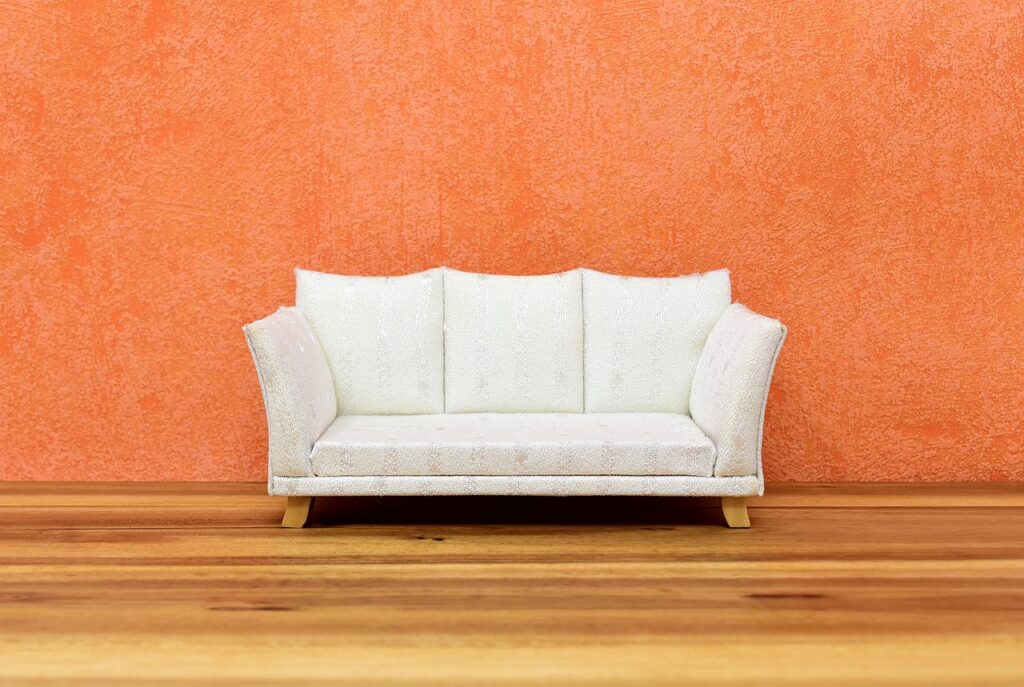As we move towards a more modern era in construction, metal building homes, often referred to as barndominiums or steel-framed houses, have surged in popularity due to their durability and beauty.
As these structures become more prevalent, homeowners are seeking furniture that complements the industrial charm while ensuring comfort and functionality. The furniture trends of 2025 offer a blend of sustainability, versatility, and design innovation, making them ideal for metal building homes.
Embracing Industrial Elegance
The industrial aesthetic, characterized by raw materials and utilitarian design, aligns seamlessly with the architectural features of metal building homes. These structures naturally expose steel beams, corrugated walls, and minimalist layouts, which pair well with furniture that highlights similar materials. Pieces that showcase unfinished or distressed textures, such as reclaimed wood, iron, and exposed bolts, create a consistent visual language throughout the space. A coffee table made of weathered oak and blackened steel legs, for instance, can feel like an extension of the walls and ceiling, grounding the design in the home’s industrial roots.
This design trend doesn’t merely prioritize structure and style; it also acknowledges the importance of function and comfort. Furniture with clean lines and durable materials still allows for an inviting, lived-in atmosphere. Leather sofas with sleek metal frames combine a warm tactile experience with a strong, architectural presence. Dining chairs crafted from both wood and metal strike a balance between hard and soft elements, ensuring the furniture remains both ergonomic and visually harmonious with the home’s core materials.
Over time, the industrial style has evolved to include more refined interpretations that maintain its authenticity while embracing contemporary living. Modern industrial furniture often includes sleek silhouettes, matte finishes, and higher-quality upholstery, making the aesthetic more approachable. Incorporating textiles like wool throws or linen cushions softens the edges of harder materials and helps make the home feel more personal. In a metal building home, this creates a layered look that’s not just stylish but also highly functional and tailored to everyday life.
Sustainable and Upcycled Materials
Sustainability remains a top priority in home furnishing choices, and 2025 has seen a surge in demand for pieces crafted from reclaimed, recycled, or upcycled materials. As more homeowners become conscious of their environmental impact, they seek furnishings that help reduce waste and resource consumption. Reclaimed wood, in particular, has become a favorite for dining tables, coffee tables, and shelving due to its unique textures and history. These materials often display imperfections that tell a story, adding a sense of depth and character to interior spaces.
Metal building homes, with their strong environmental appeal, are perfect backdrops for these types of furnishings. The industrial base of these structures complements sustainable pieces like wood salvaged from old barns or factories, or metal that has been reconditioned and repurposed. These materials add a sense of authenticity and intentionality to the design, reinforcing the idea that comfort and beauty do not have to come at the planet’s expense. Furniture made with natural, non-toxic finishes and low-impact processes also contributes to better indoor air quality and a healthier home environment.
Beyond aesthetics and environmental benefits, sustainable furniture often boasts superior craftsmanship. Artisans and designers focusing on eco-friendly practices tend to build for longevity rather than fast trends. This mindset aligns well with the durability of a metal building home, creating a living space that is built to last both structurally and stylistically. Choosing sustainable furniture becomes not just an ethical decision but also a practical one, supporting a long-term vision for the home and its inhabitants.
Multifunctional and Modular Designs
The shift toward multifunctional living spaces has had a significant influence on furniture trends. As more people work from home or adapt their living spaces for hybrid use, the demand for pieces that serve multiple purposes has grown. Modular sofas that can be reshaped into sectionals or guest beds, coffee tables with hidden storage, and dining tables that expand for larger gatherings all offer the kind of flexibility today’s homeowners need. These designs accommodate changing lifestyles and make the most out of limited square footage.
Metal building homes often feature open layouts, which make multifunctional furniture especially useful. With fewer walls and divisions, it becomes essential to define spaces without cluttering them. A bookshelf that doubles as a room divider can separate a home office from the living area while also serving as storage and display. A storage ottoman might serve as extra seating, a table, or a place to stow away workout gear or blankets, enhancing the practicality of the space without sacrificing style.
Modular furniture also offers the ability to evolve alongside your needs. A home that starts as a minimalist bachelor pad might later need to adapt for family life or more elaborate entertaining. Pieces that can change configuration, increase capacity, or be repurposed for different rooms allow homeowners to reimagine their interiors without a full redesign. In the context of a metal building home, which itself offers long-term versatility, modular furniture becomes an ideal companion, supporting a lifestyle that’s as flexible as the space itself.
Biophilic and Wellness-Driven Interiors
The design principle of biophilia emphasizes the human connection to nature and is increasingly being applied to interiors to promote well-being and tranquility. Furniture trends in 2025 reflect this movement through the use of natural materials, earthy color palettes, and organic textures. Items made from live-edge wood, bamboo, and jute bring a sense of the outdoors inside, offering a welcome contrast to the industrial strength of a metal building home. These materials invite touch and interaction, enhancing the sensory experience of the space.
Incorporating biophilic elements into a metal building home not only creates aesthetic balance but also contributes to mental and physical health. Strategically placed furniture, like a wooden bench near a large window, can help draw attention to outdoor views and natural light. Furniture with built-in planters or those positioned around greenery add freshness and vibrancy to the space. When metal structures feel too stark or cold, introducing warm, tactile elements inspired by nature can soften the atmosphere and make the home feel more nurturing.
Biophilic furniture also works hand in hand with wellness-driven design strategies. Ergonomically designed chairs for the home office, toxin-free upholstery fabrics, and furniture arranged to encourage better flow and natural light all serve to support healthier lifestyles. In a metal building home, which may feature high ceilings and wide-open spaces, these design choices help avoid echoey, impersonal environments and instead foster a sense of intimacy and groundedness. The result is a holistic living experience that supports the body and mind.
Curved and Organic Shapes
Designs that feature curved and organic shapes are making a strong return, helping to counterbalance the straight lines and sharp angles often found in modern architecture. Rounded sofas, oval coffee tables, and sculptural accent chairs introduce a sense of softness that complements rather than competes with the strong framework of a metal building home. These flowing forms evoke natural movement and add an artistic touch to spaces that might otherwise feel too rigid or austere.
These shapes do more than just beautify a room. Furniture with gentle curves encourages comfort and relaxation, signaling a space designed for people to unwind and connect. A circular dining table, for example, not only facilitates easier conversation but also breaks up the boxy dimensions of a typical room. Rounded corners on furniture can also improve movement within a space, making rooms feel more open and welcoming, especially in high-traffic areas like living rooms and kitchens.
In a metal building home, integrating organic forms is a way to soften the industrial vibe without diluting its integrity. Using sculptural furniture made of soft materials like velvet or boucle upholstery can create a tactile contrast against steel and concrete finishes. Curved furniture also reflects a growing design philosophy that emphasizes emotional comfort, human connection, and a break from the overly technical feel that some modern interiors can convey. This results in a more inviting and personalized home environment.
Mixed Metal Finishes
Home interiors are no longer confined to a single type of metal finish. In 2025, blending various metal tones has become a key trend in both furniture and decor. This layered approach allows for more creative expression and adds dimension to any room. Instead of sticking with all-brushed nickel or chrome, designers now combine brass, blackened steel, antique bronze, and copper in a single space. This mix of tones gives rooms a curated, high-end look that feels intentional and rich.
Metal building homes naturally contain exposed steel beams, pipes, and hardware, providing a strong foundation for playing with metal finishes. A matte black pendant light can contrast beautifully with brass cabinet hardware, while chrome legs on furniture might be echoed in a nearby mirror frame. The combination doesn’t have to be symmetrical or uniform to be effective. In fact, the variation enhances the depth and complexity of the interior, making it more visually engaging.
Using mixed metals also offers homeowners more flexibility in sourcing furniture and accessories. Instead of being restricted to one finish, they can incorporate family heirlooms, vintage finds, or favorite pieces without worrying about uniformity. This trend supports personal style and individuality while still fitting into an overarching design narrative. In a metal building home, where raw materials are a key part of the architecture, mixing metals can elevate the space from purely functional to truly refined.
Conclusion
Furnishing a metal building home in 2025 involves a thoughtful blend of industrial elements with contemporary trends that prioritize sustainability, functionality, and personal expression. Embracing these furniture trends not only complements the architectural essence of metal homes but also creates spaces that are comfortable, stylish, and uniquely yours.

